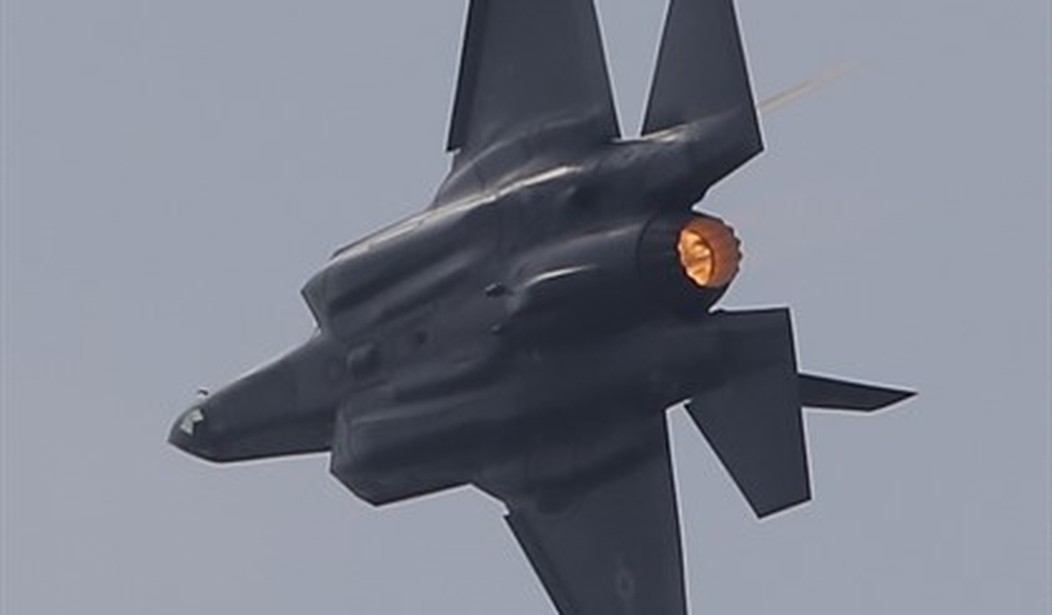In the Republic’s early days, the French foreign minister Charles-Maurice de Talleyrand told the American delegation seeking to avoid war with revolutionary France there was a fee for him to join the talks
Famously, the Americans turned around and declined, and the American people rallied to the slogan: “Millions for defense, not a dime for tribute.”
It is a noble sentiment, is commendable and it has done America well for the 226 years that followed Talleyrand’s failed shakedown, but not when it becomes a blank check for two of the most monstrously complex and bungled weapons systems in the country’s history, the USS Gerald R. Ford (CVN-78) and the 10-carrier Ford class, and then, the F-35 Lightning II—ironically, a jet fighter that cannot fly within 25 miles of thunderstorms.
USS Gerald R. Ford (CVN-78)
Consider our carrier-centric Navy. We have 11 deployable aircraft carriers, which sounds like a lot, until you put two in the yard for refit, four on their post-deployment homeport—and now, you have just five somehow covering the globe.
Two of them, Reagan and America, are currently steaming in the Western Pacific to backstop our allies and face off against China. Eisenhower is in the Western Atlantic, and Vinson is off our West Coast. That leaves Ford toiling in the Mediterranean Sea, showing the flag—and desperately trying to prove it can sail in the rain.
At one point, after its mismanaged and under-engineered development by the Navy and Newport News Shipbuilding, Congress once capped spending on Ford at $13 billion. Still, today, the final price tag might be more than $20 billion if you include $5 billion in research and development.
Sure, that does not seem like much compared to the Ukrainian project, but that is still a chunk.
Ford was not only a drain on resources, but its wildly extended construction and sea trials further strained the rest of the carrier inventory. Consider that Ford was commissioned in 2017, four years after its original schedule, and she did not make its maiden voyage until 2022.
F-35 Lighting II
The F-35 was designed to work for the Air Force as a bomber and fighter. It was designed to work for the Navy as a carrier-launched plane. It was designed to take off vertically for the Marines.
One plane with three missions. What could go wrong?
Like with USS Ford, defense contractor Lockheed Martin has a history of overpromising and underdelivering with the F-35.
The Congressional Budget Office issued a damning report documenting how the jet’s dependability is plunging. Its report “also found that the F-35 had a lower mission-capable rate than older F-22s and F-15s.” While our country fought two wars over two decades, the F-35 was seldom deployed and was never used on complex missions.
Ouch. Still, the future should be brighter, right? The F-35 is supposed to be updatable, so it can always remain ahead of potential foes.
“The F-35A’s advanced sensor package is designed to gather, fuse and distribute more information than any fighter in history, giving operators a decisive advantage over all adversaries,” according to the Air Force fact sheet. “Its processing power, open architecture, sophisticated sensors, information fusion, and flexible communication links make the F-35 an indispensable tool in future homeland defense, Joint and Coalition irregular warfare, and major combat operations.” That’s the plan.
But that only works if the system can be updated. Right now, many F-35s are sitting in the garage, waiting for crucial software installation.
Defense News reports that the jet’s “TR-3 schedule has slipped considerably, and the F-35 Joint Program Office is now expecting it to arrive no earlier than this December — and perhaps as late as April 2024, a full year behind schedule.” Mind you; this is the third-generation update. After installing it, the F-35 also needs a fourth-generation update that builds on the third.
It all means that some 80 F-35s could be stuck in limbo. The Pentagon will only take delivery of the jets with the software upgrades, and Lockheed cannot manage to finish its job of installing the proper programming and showing it works.
Meanwhile, the price of the F-35 is supposed to be coming down as the plane matures and the military uses more of them—economies of scale, and so forth. An entire squad of F-35s could cost less than $250 billion. In reality, the cost is more than $400 billion; again, at least many of the newest planes will be grounded until next year.
That’s hardly a good investment.
There was a time when the United States was the only country with drones. Now, even Azerbaijan has them. By the time the F-35 program gets its act together—who else will have their own peer fighter?















Join the conversation as a VIP Member